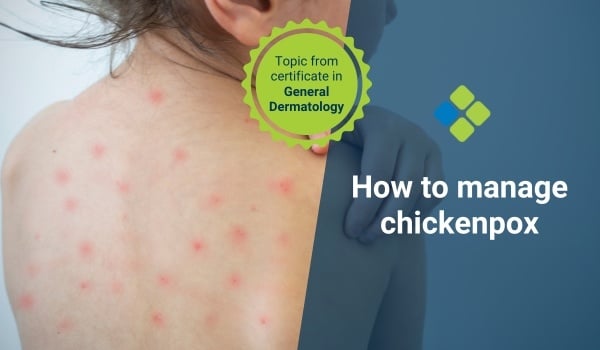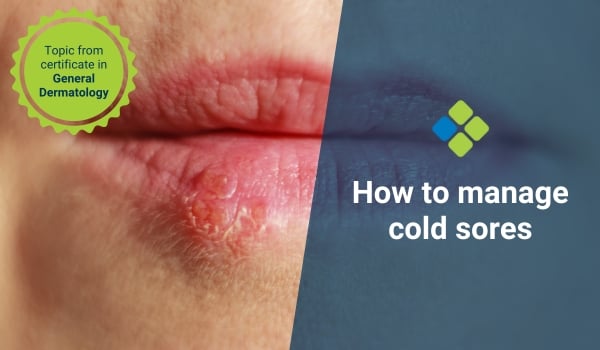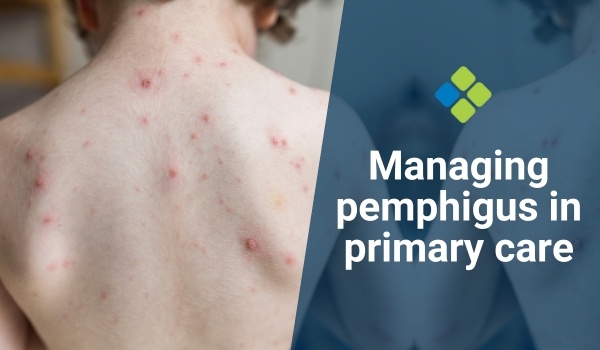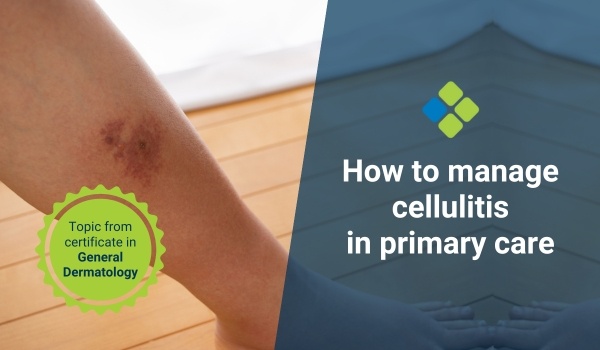How to manage chickenpox in primary care
Read about the role of GPs in diagnosing, managing & preventing chickenpox, with care including symptomatic treatment, antiviral therapy & vaccination.

HealthCert Education
Chickenpox, or varicella, is a highly contagious viral infection caused by the varicella-zoster virus (VZV). Although typically a mild disease in healthy children, chickenpox can lead to serious complications in immunocompromised individuals, pregnant women, and neonates. GPs play a vital role in diagnosing, managing, and preventing chickenpox.
Epidemiology and transmission
Chickenpox is most common in children under ten years of age, but it can affect individuals of all ages. The disease is highly contagious, with a transmission rate of ninety percent among susceptible individuals who are exposed to the virus. The primary mode of transmission is through respiratory droplets or direct contact with vesicular fluid from skin lesions. Patients are contagious from one to two days before the onset of the rash until all lesions have crusted over, which usually takes about five to seven days.
Clinical presentation
The classic presentation of chickenpox includes mild fever, malaise, headache, and anorexia, symptoms which precede the rash by one to two days.
A pruritic rash that progresses from macules to papules to vesicles and finally to crusted scabs typically appears in successive crops over several days, leading to lesions in different stages of development simultaneously.
The rash often begins on the trunk and face, spreading to other parts of the body, including the mucous membranes.
Diagnosis
Chickenpox is primarily diagnosed based on clinical presentation, particularly the characteristic rash. Laboratory confirmation is rarely necessary but can be done in atypical cases or high-risk individuals. Diagnostic options include:
- Polymerase Chain Reaction (PCR) is the most sensitive and specific test for VZV detection, usually performed on vesicular fluid, blood, or respiratory specimens.
- Direct Fluorescent Antibody (DFA) Test is useful for detecting VZV in skin lesions.
- Serology can be used to assess immunity status or recent infection.
Management
The management of chickenpox in primary care focuses on symptomatic relief, preventing complications, and addressing high-risk cases.
Symptomatic treatment
Acetaminophen is recommended for fever. Avoiding aspirin is recommended due to the risk of Reye’s syndrome.
Oral antihistamines (e.g. diphenhydramine) and topical calamine lotion or colloidal oatmeal baths can help alleviate itching.
Adequate fluid intake is necessary to promote hydration.
The patient's fingernails should be trimmed short to prevent secondary bacterial infection from scratching.
Topical antibiotics may be needed if there are signs of secondary infection.
Antiviral therapy
Antiviral treatment with acyclovir or valacyclovir is recommended for individuals at high risk of complications, including:
- Immunocompromised patients.
- Pregnant women.
- Neonates and infants under one year of age.
- Adolescents (particularly those over twelve years old).
- Adults, who are at greater risk of severe disease.
Antiviral therapy is most effective when started within 24 hours of rash onset.
Management of complications
The most common complication is secondary infections, particularly in children. Treat with appropriate antibiotics if suspected.
Encephalitis or cerebellar ataxia, although rare, requires immediate referral to a specialist.
Pneumonia is more common in adults, especially smokers, and requires urgent intervention.
Isolation and infection control
Patients should avoid contact with susceptible individuals, such as pregnant women, newborns, and immunocompromised persons until all lesions have crusted.
Children with chickenpox should be kept out of school or daycare until they are no longer contagious.
Prevention
The varicella vaccine is the most effective method of preventing chickenpox. It is recommended for all children without contraindications.
Varicella-zoster immune globulin (VZIG) is indicated for high-risk individuals exposed to the virus who cannot receive the vaccine. Acyclovir can also be considered as post-exposure prophylaxis in some cases.
GPs are crucial in the early recognition, management, and prevention of chickenpox. Appropriate care, including symptomatic treatment, antiviral therapy, and vaccination, at this level significantly reduces the morbidity associated with chickenpox.
– Dr Rosmy De Barros
For further information on this topic, you may be interested to learn more about the HealthCert online Professional Diploma program in General Dermatology.
Engaging with this blog can help meet your annual
|

How to claim your CPD hoursIf you consume educational webinars, podcasts, articles, or research on this blog, you can Quick Log CPD hours with the RACGP via the usual self-submission process. You will be asked to reflect on what you have learned, and you will require supporting evidence such as a screenshot.Download the RACGP’s guide to self-recording your CPD here. |
Read another article like this one: How to manage onychomycosis in primary care
References
Heininger, U., & Seward, J. F. (2006). Varicella. The Lancet, 368(9544), 1365-1376.
Duncan, D. L. (2019). Chickenpox: Presentation, transmission, complications and prevention. British Journal of School Nursing, 14(10), 482-485.
Chen, T. M., George, S., Woodruff, C. A., & Hsu, S. (2002). Clinical manifestations of varicella-zoster virus infection. Dermatologic clinics, 20(2), 267-282.
Albrecht, M. A., Levin, M. J., Hirsch, M., & Mitty, J. (2020). Epidemiology, clinical manifestations, and diagnosis of herpes zoster. UpToDate. Waltham, MA: UpToDate.
Presti, C. L., Curti, C., Montana, M., Bornet, C., & Vanelle, P. (2019). Chickenpox: an update. Médecine et Maladies Infectieuses, 49(1), 1-8.
Cookson, H. (2023). Antivirals for Herpesviruses. In Handbook of Systemic Drug Treatment in Dermatology (pp. 67-73). CRC Press.
El-Mesady, A., & Ali, H. M. (2024). The influence of prevention and isolation measures to control the infections of the fractional Chickenpox disease model. Mathematics and Computers in Simulation.

 1800 867 1390
1800 867 1390






